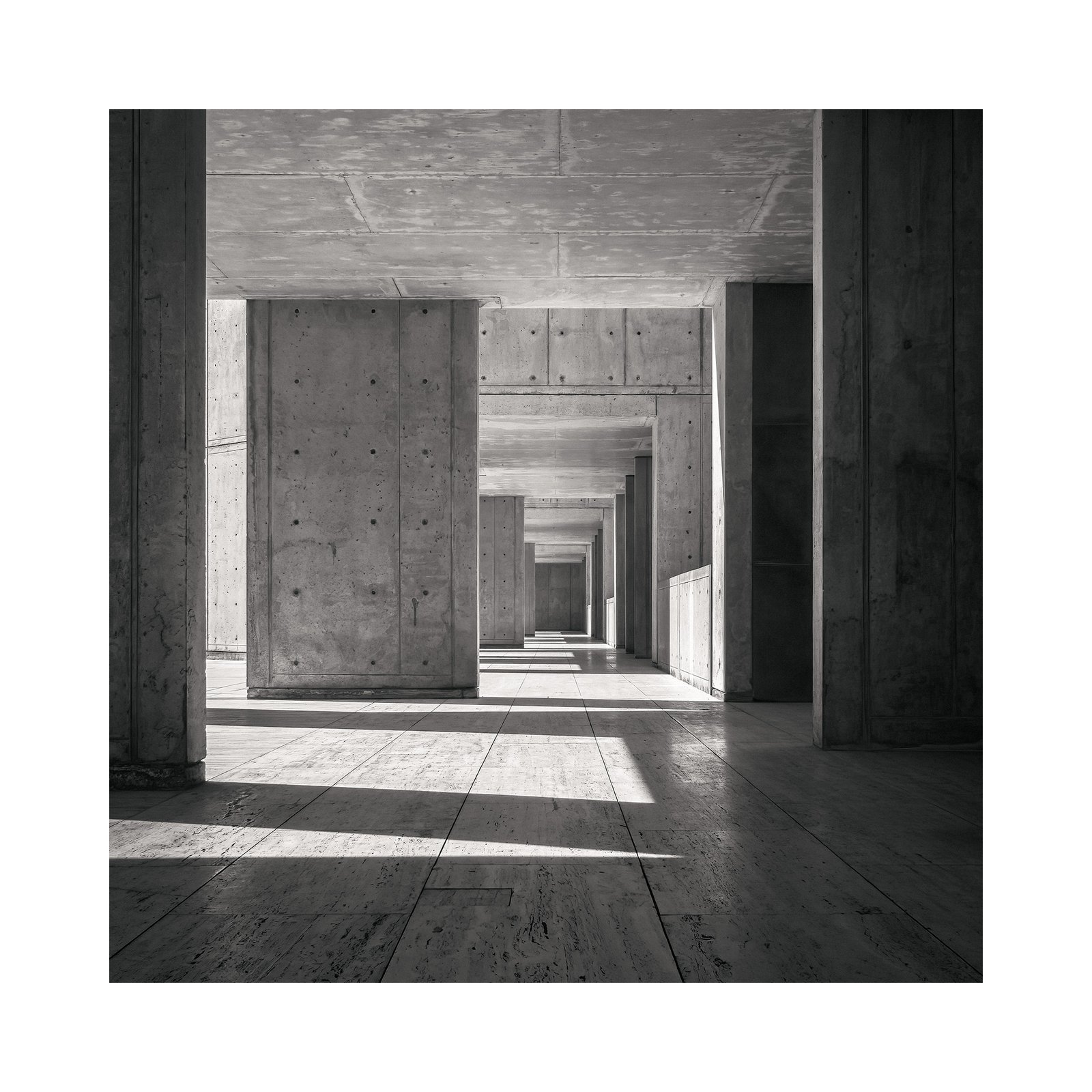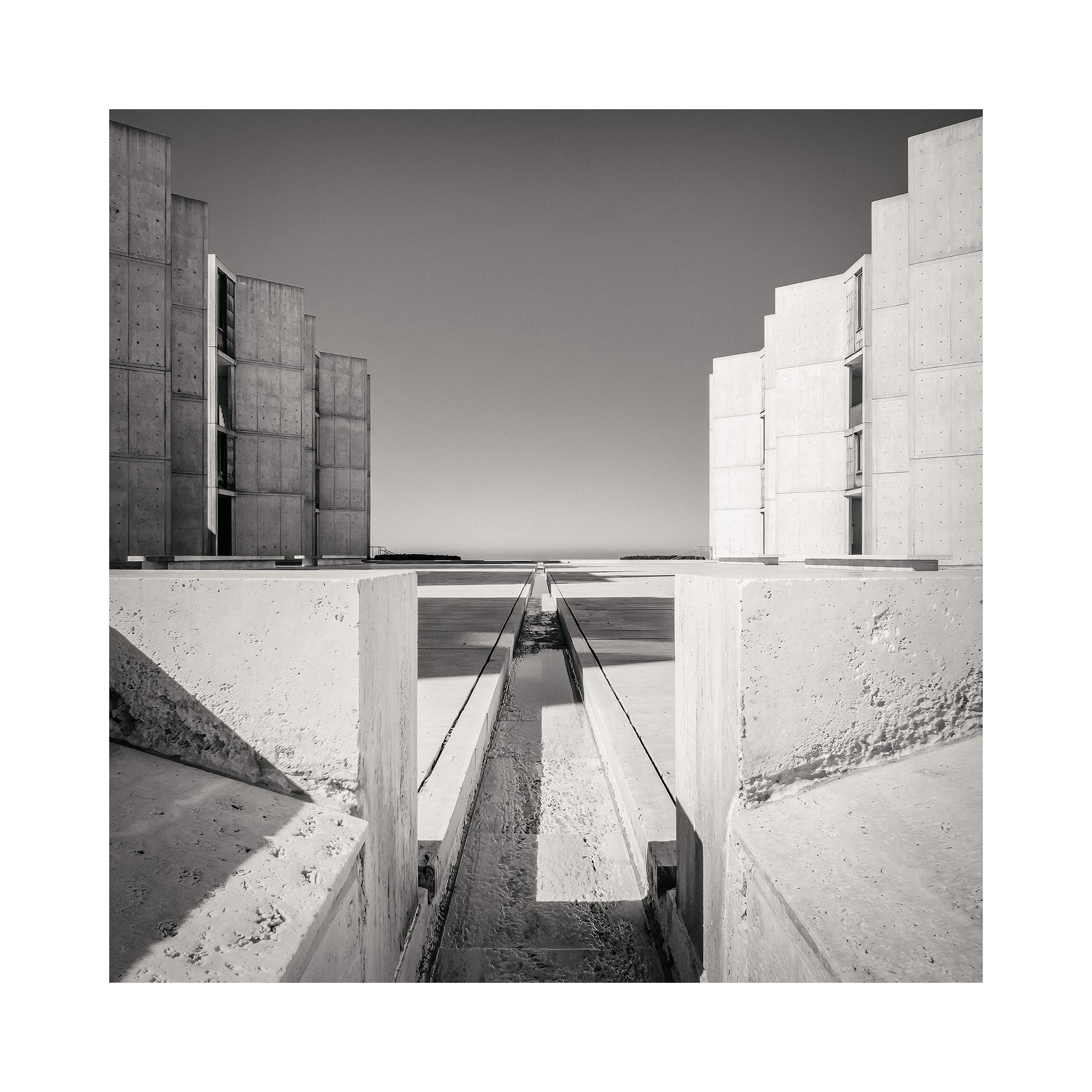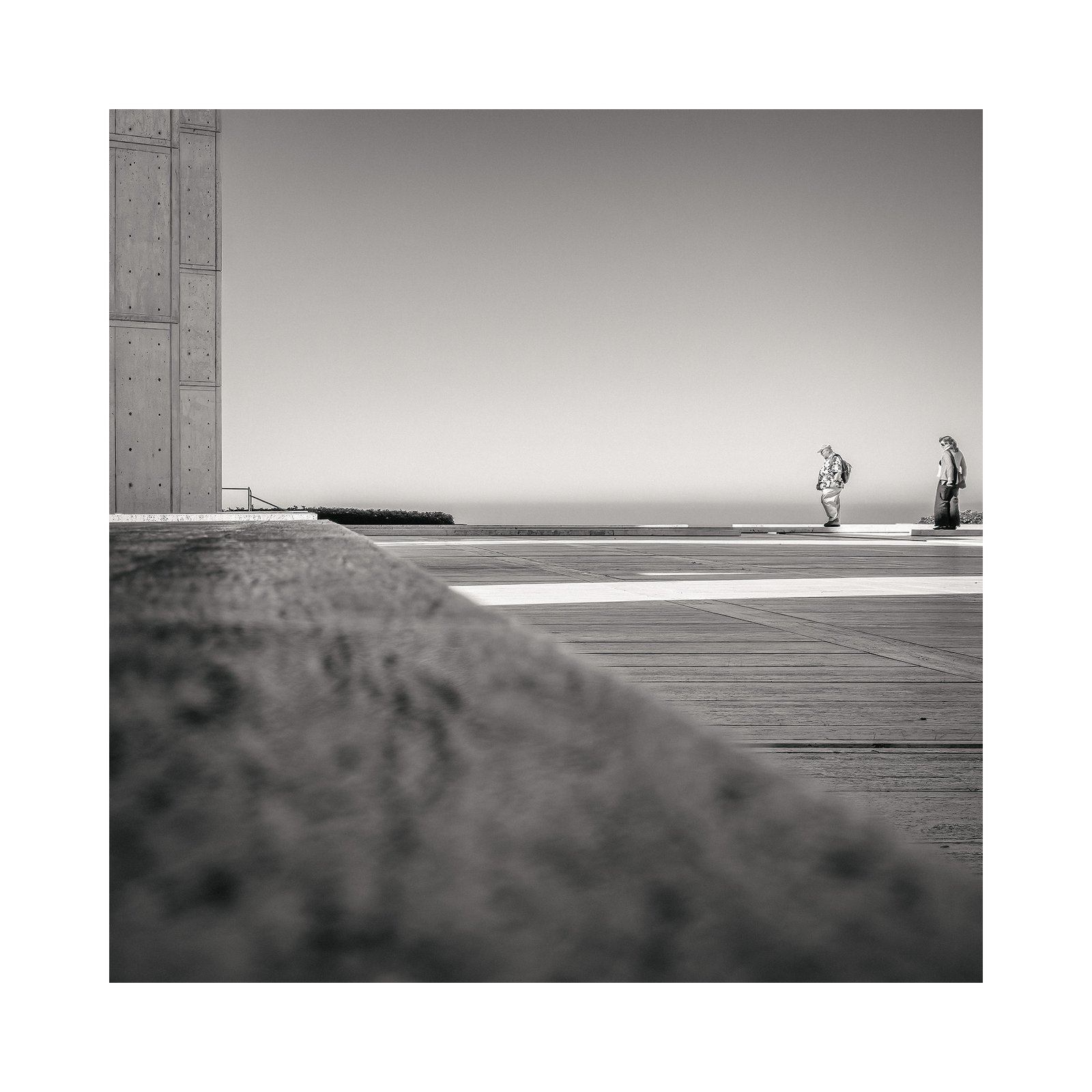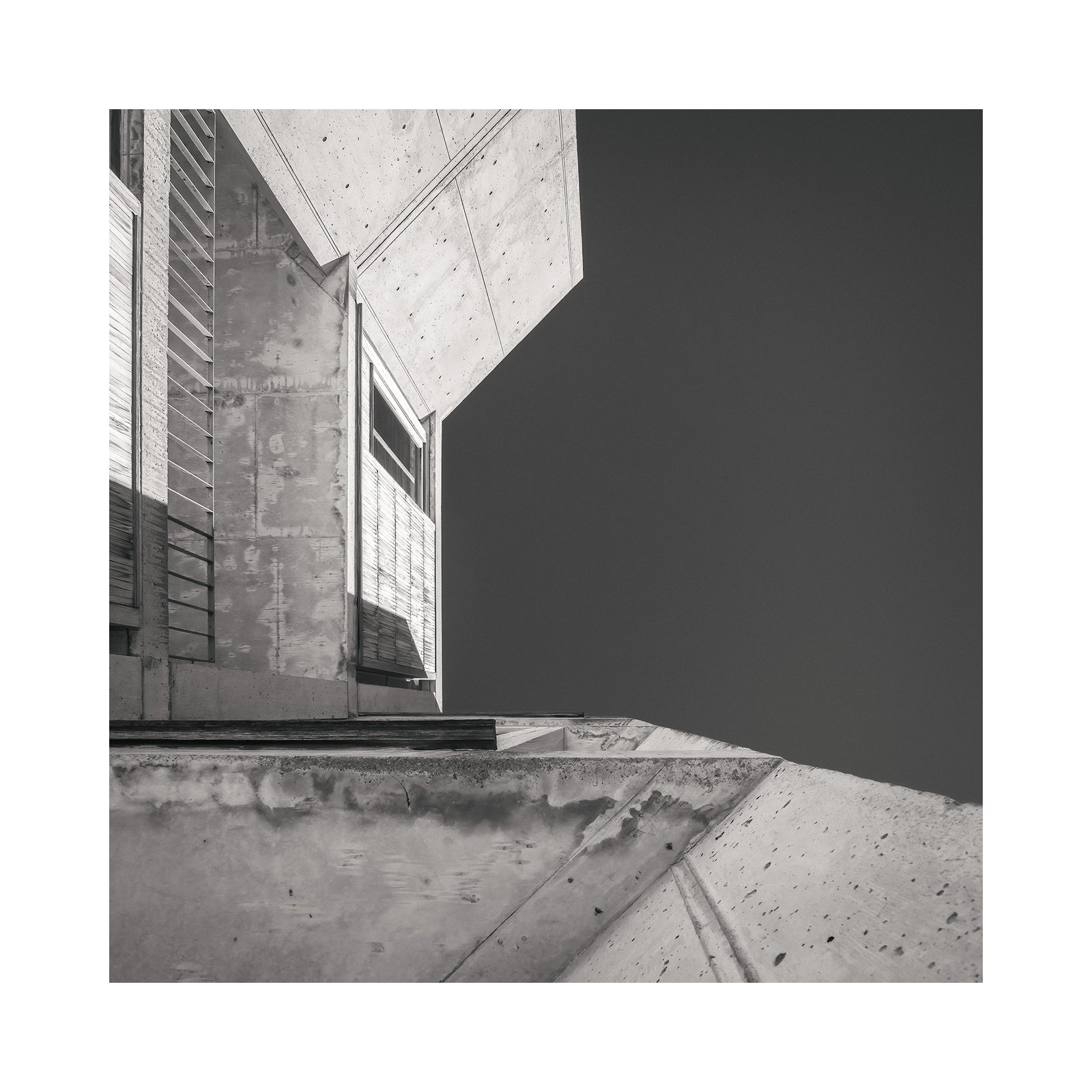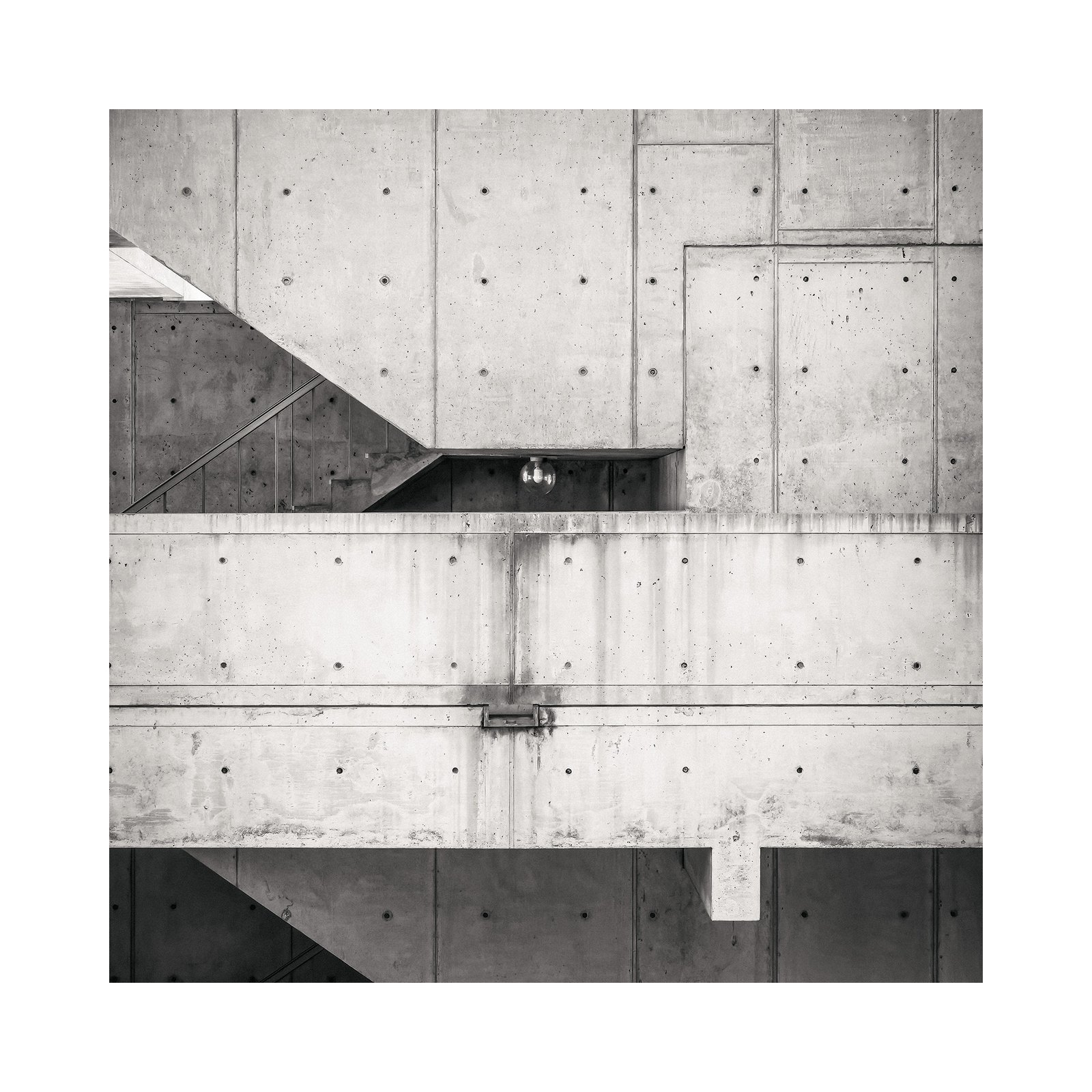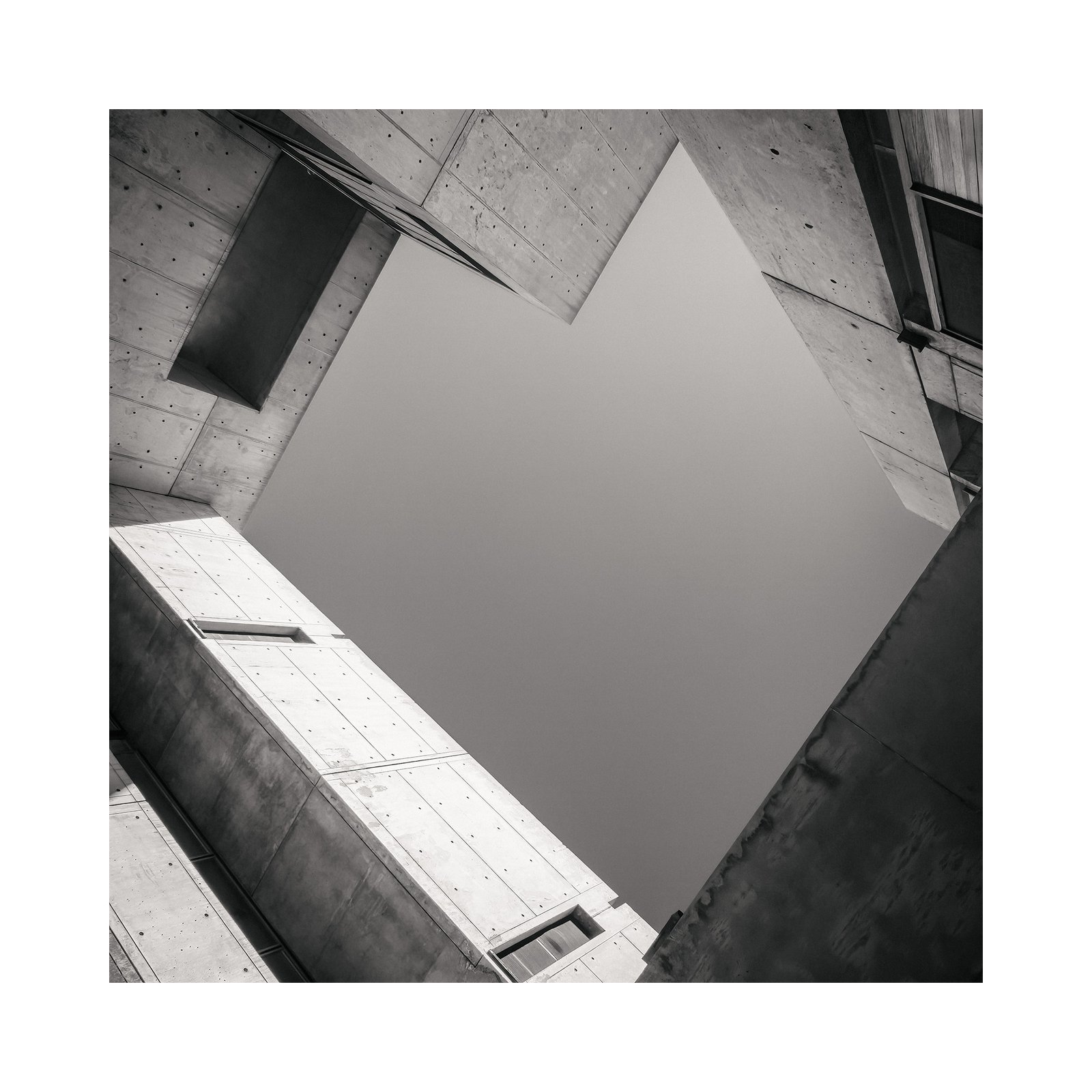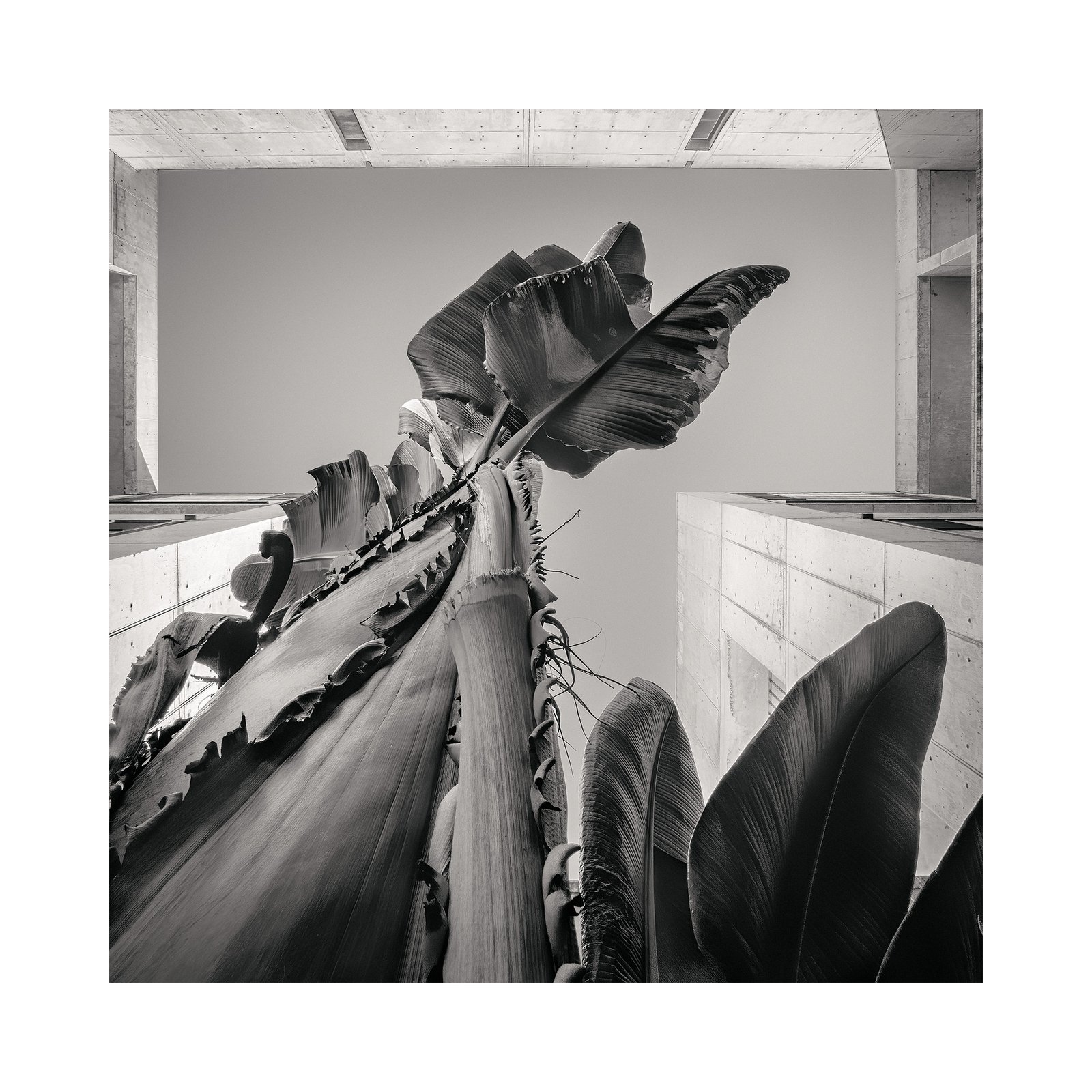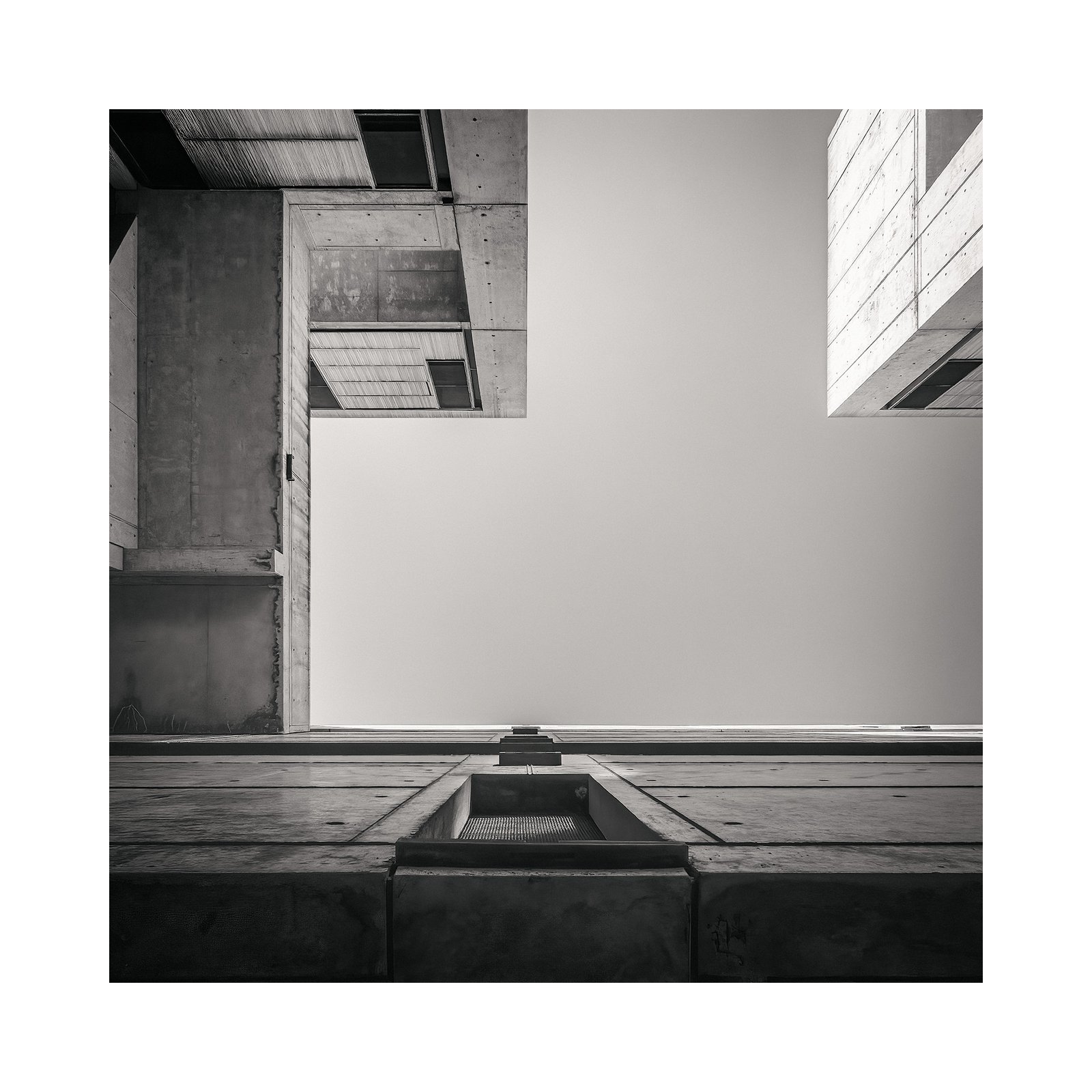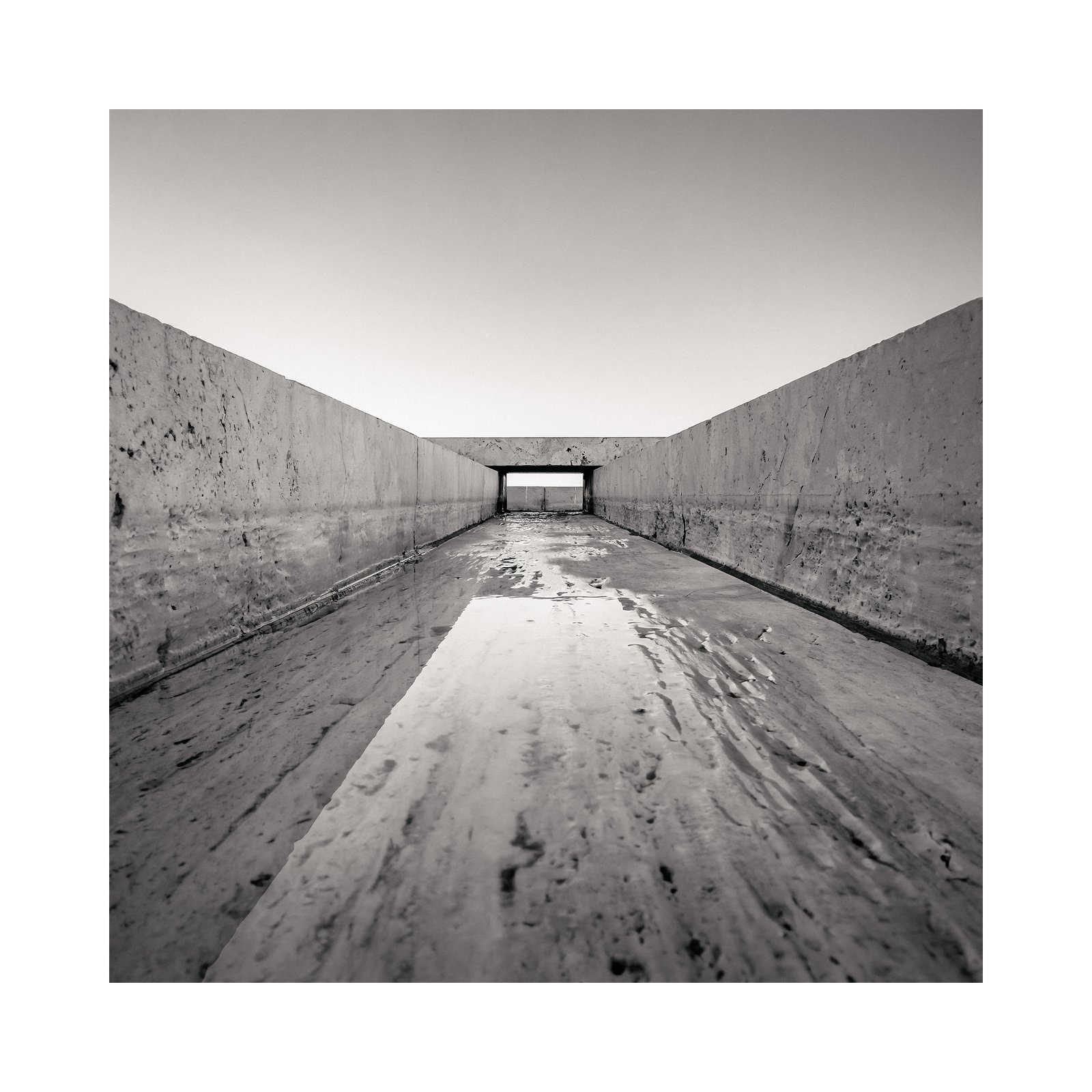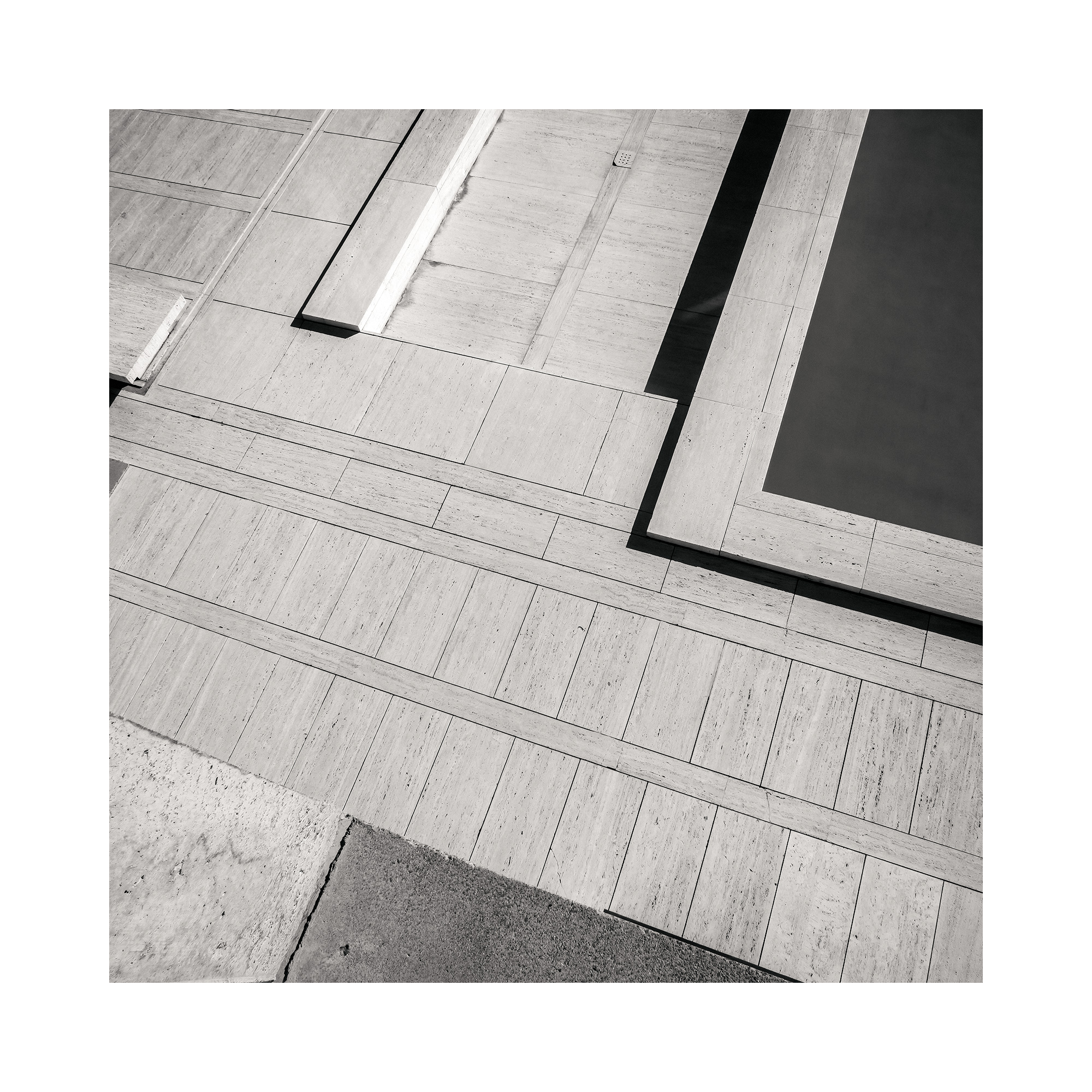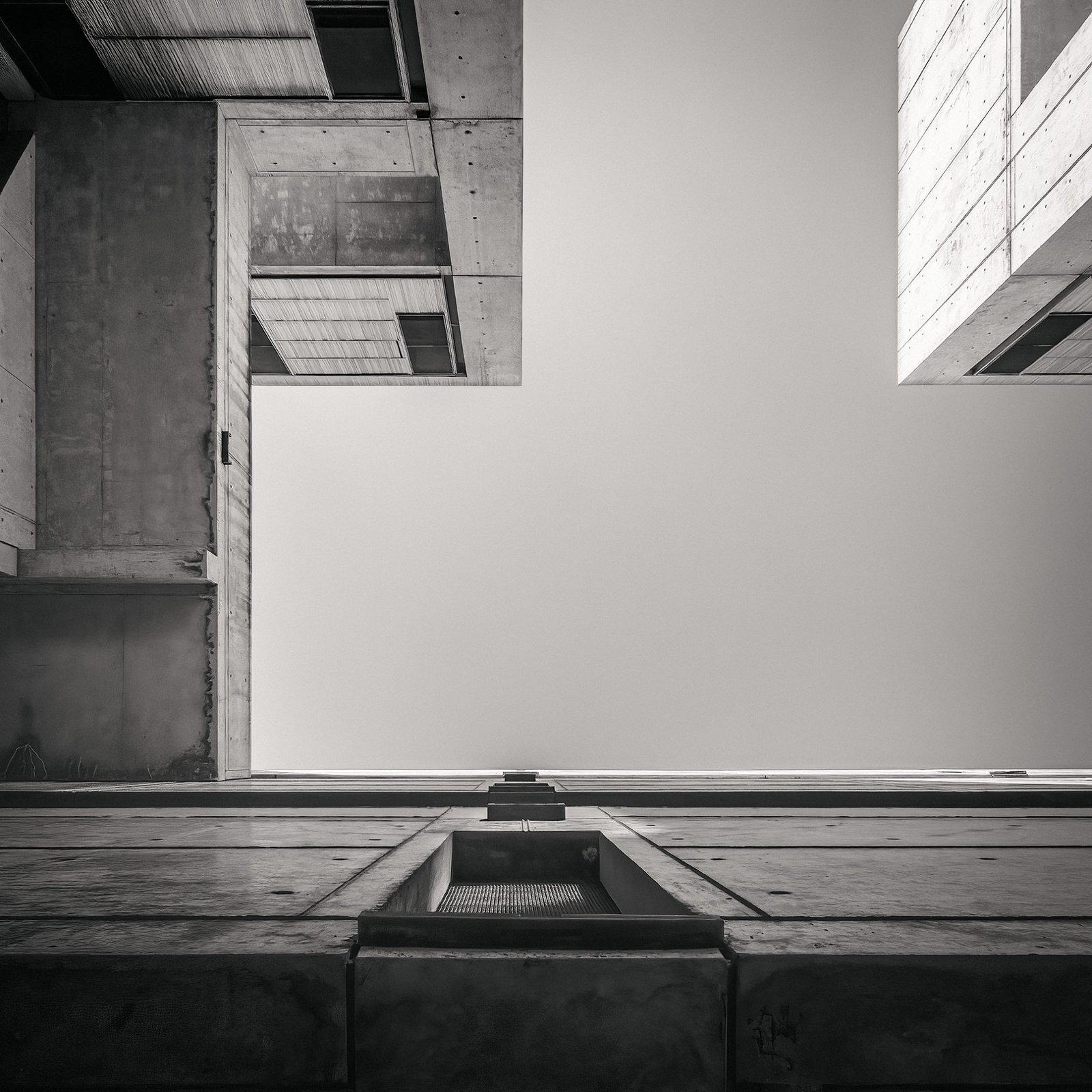In 1959, Jonas Salk, the man who had discovered the vaccine for polio, approached Louis I. Kahn with a project. The city of San Diego, California had gifted him with a picturesque site in La Jolla along the Pacific coast, where Salk intended to found and build a biological research center. Salk, whose vaccine had already had a profound impact on the prevention of the disease, was adamant that the design for this new facility should explore the implications of the sciences for humanity. He also had a broader, if no less profound, directive for his chosen architect: to “create a facility worthy of a visit by Picasso.” The result was the Salk Institute, a facility lauded for both its functionality and its striking aesthetics – and the manner in which each supports the other.
Luke Fiederer, ArchDaily August 27, 2017
In November 2010 I accompanied Sarah on one her field trips with architecture students from Cal Poly Pomona. Was only carrying a “dinky” Panasonic Lumix DMC LX2, no viewfinder and only 10 megapixels. I still remember fondly the ease of use of this little gem of a camera despite its limitations.
The series is available for purchase. Each photograph is printed by the artist on Hahnemühle Fine Art Baryta Satin 300 gsm. 11 Ink process. The limited edition photographs are signed, dated and numbered, and come with a certificate of authenticity. 12″x12″ print on 18″x18″ sheet (3″ white borders).
